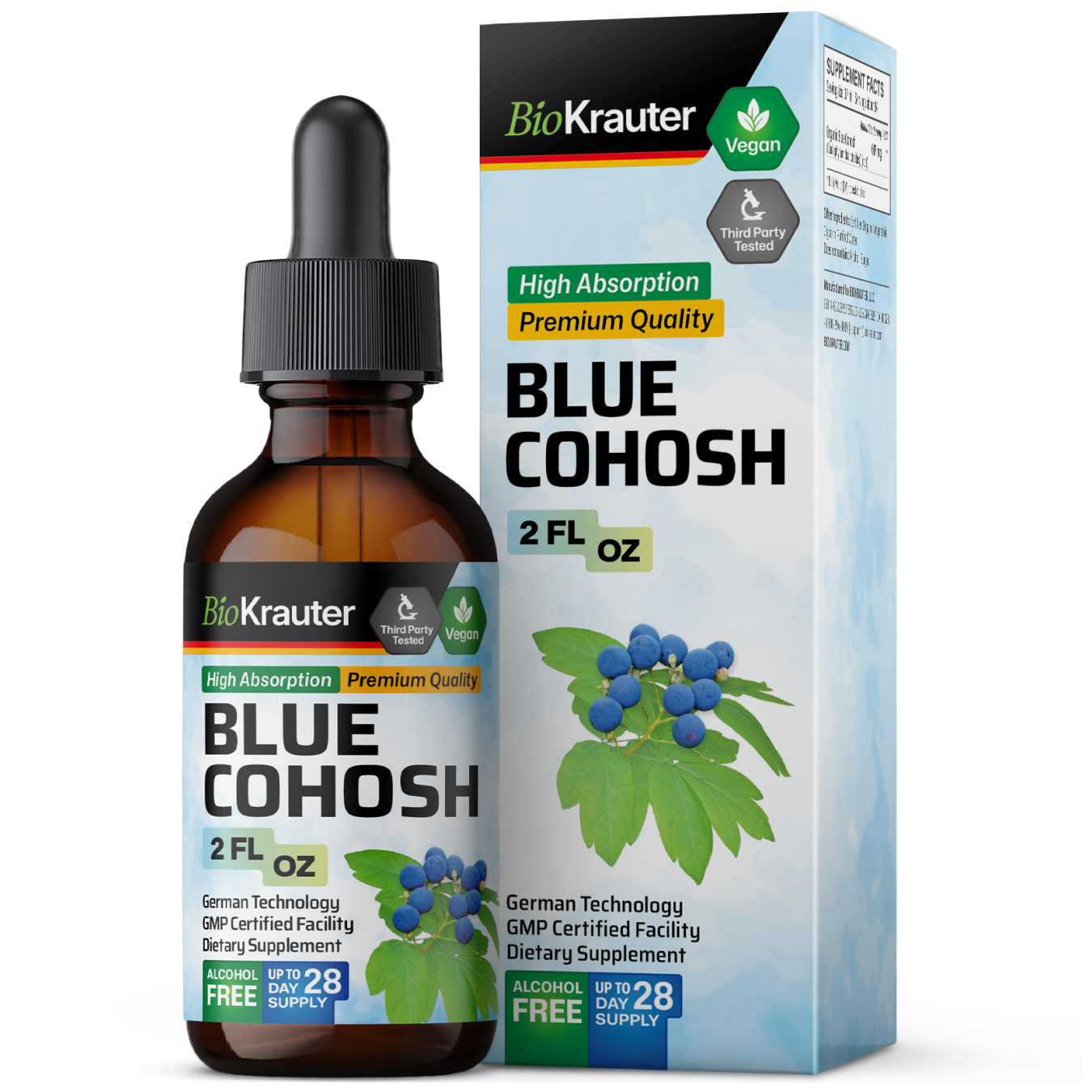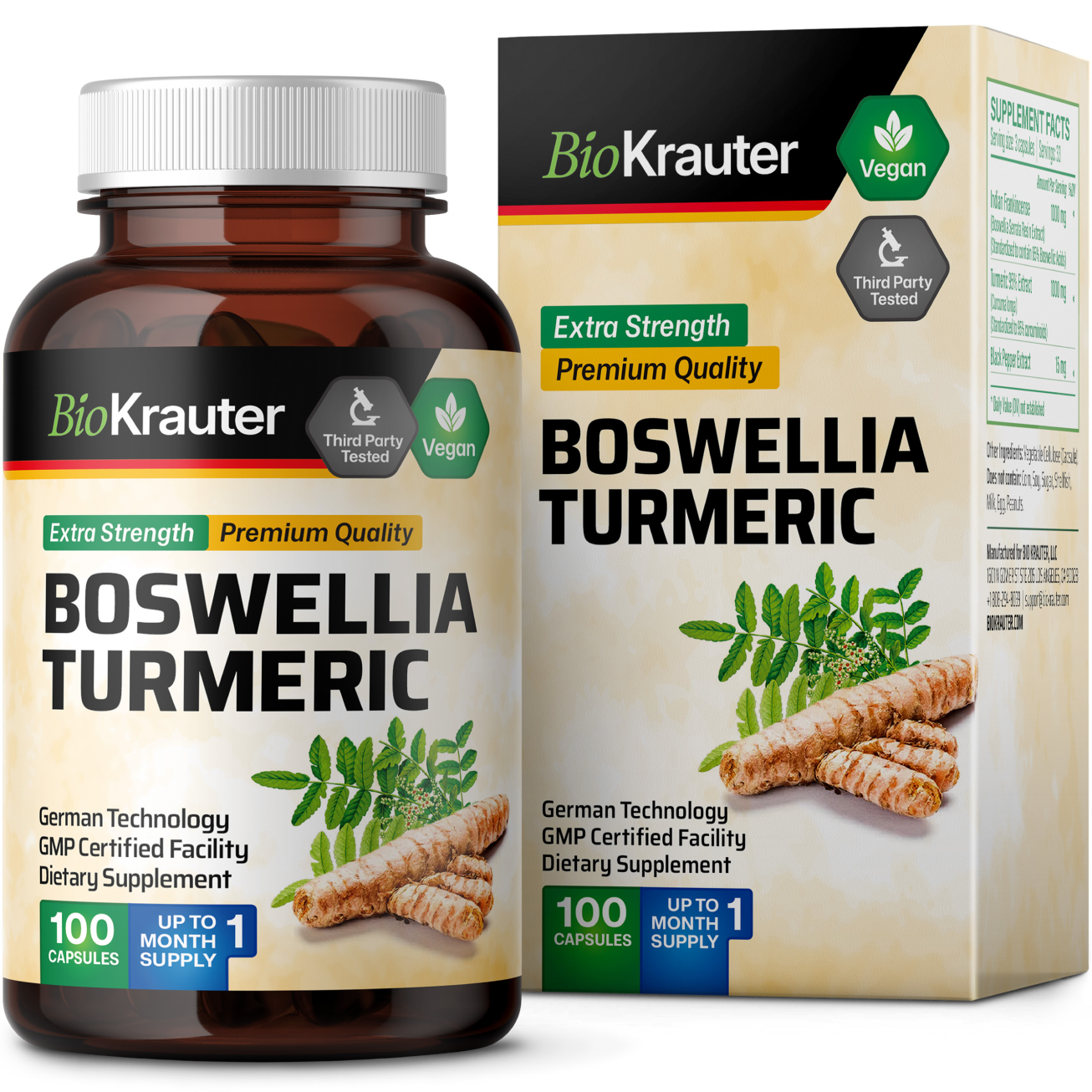-

What is Blue Cohosh Used For?
In traditional practices, blue cohosh has been revered for its ability to ease menstrual discomfort, including abdominal cramps, inflammation and bloating [1], [2]. Not to mention, it has been used to alleviate menopause symptoms, offering relief from hot flashes, mood swings and sleep disturbances.





- Menstrual pain relief The combination of key compounds in the herb has the ability to relieve menstrual cramps. The alkaloids in blue cohosh, particularly caulosaponin have antispasmodic properties, which help relax uterine muscles, reducing the intensity and frequency of cramps that often accompany menstruation [3].
- Menstruation stimulation The herb is particularly rich in alkaloids, saponins and glycosides, which collectively contribute to its emmenagogue properties – meaning it can stimulate menstrual flow. These compounds induce contractions in the uterine muscles, initiating menstrual flow and establishing regular menstrual cycles [4].
- Fewer menopause symptoms The relief of menopause symptoms with blue cohosh is primarily attributed to its phytoestrogenic properties. These compounds can mimic the action of estrogen, which helps balance hormonal fluctuations [5]. This is essential to reduce symptoms like hot flashes, night sweats, mood swings and sleep disturbances.
- Laxative properties Saponins are known for their mild laxative effect [6]. They irritate intestinal lining, stimulating bowel movements. This irritation is gentle and typically leads to the softening of the stool, making it easier to pass, making this herb beneficial for those dealing with occasional constipation.
- Anti-Inflammatory support The alkaloids in a blue cohosh plant, notably caulosaponin, can inhibit the production of certain chemicals in the body that trigger inflammation, such as prostaglandins [7]. By reducing the levels of these inflammatory mediators, this plant can help alleviate pain and swelling associated with various inflammatory conditions.
- Joint flexibility The anti-inflammatory properties of cohosh are particularly beneficial for joint health. Inflammation is a key factor in many joint-related conditions, such as arthritis and rheumatism [8]. By reducing inflammation, this plant helps alleviate the pain and swelling often associated with joint issues, thereby improving mobility and flexibility.
Products Featuring Blue Cohosh
$15.29
Looking for more information?
View All FAQsBlack and blue cohosh are different herbs and belong to different families. While often mentioned together due to their similar names and uses in women's health, these herbs possess different properties and actions.
Blue cohosh is a North American native plant traditionally used for a variety of gynecological purposes. It is usually utilized to relieve menstrual cramps and help with menopause symptoms. Its active constituents, including alkaloids such as caulosaponin, are believed to have uterotonic and antispasmodic properties, contributing to its effectiveness in these areas.
Black cohosh, on the other hand, is another North American herb that is more specifically renowned for its benefits in managing menopause symptoms [9]. It is thought to work primarily through its phytoestrogenic properties, helping to alleviate hot flashes, mood swings and sleep disturbances associated with menopause [10].
The main distinction lies in their chemical composition and pharmacological actions. Blue cohosh contains certain alkaloids that can stimulate uterine contractions. Black cohosh, meanwhile, does not have these uterotonic properties and is generally considered beneficial menopause relief.
Historically, it has been utilized by midwives and in folk medicine to stimulate uterine contractions and facilitate childbirth. Its active compounds, especially certain alkaloids like caulosaponin, are believed to have uterotonic effects, which can help in initiating and regulating contractions during labor.
While Blue Cohosh benefits for female reproductive health have been traditionally recognized, it’s important for pregnant women to use extreme caution. Due to its potency, this herb should only be used under the supervision of a qualified healthcare professional.
This versatile herb works through a combination of its active compounds that exert various pharmacological effects. Key constituents in blue cohosh include alkaloids, saponins and glycosides, each contributing to the herb's medicinal properties.
These alkaloids are known for their uterotonic effects, meaning they can stimulate the muscles of the uterus [11]. This property is particularly useful in menstrual regulation. Additionally, these alkaloids possess antispasmodic properties, which aid in relaxing muscle spasms and tension, thereby alleviating conditions like menstrual cramps [12].
Saponins contribute to the herb’s anti-inflammatory effects [13]. They help reduce swelling and pain associated with conditions like rheumatism or arthritis.
Glycosides, another group of compounds in blue cohosh, are believed to support the herb's overall therapeutic effects, although their specific action in the body is less clear compared to alkaloids and saponins.
Together, these compounds make blue cohosh a multifaceted herb with a range of potent health benefits!
Blue cohosh liquid extracts (such as tinctures) are considered the most effective form for fast absorption and targeted support. Their benefits include a quicker onset of action and easy dose adjustment, making it ideal for short-term, traditional uses like labor preparation or menstrual balance. The liquid form also blends well with other herbs in women's health formulas.
Other available forms include:
- Capsules or tablets – convenient and shelf-stable, but slower to absorb
- Dried root for tea – traditional, but less potent and harder to dose accurately
- Powdered extract – can be mixed into formulas, though not as fast-acting as tinctures
- https://www.webmd.com/vitamins/ai/ingredientmono-987/blue-cohosh
- https://pubmed.ncbi.nlm.nih.gov/22988475/
- https://www.sciencedirect.com/topics/medicine-and-dentistry/caulophyllum-thalictroides
- https://www.sciencedirect.com/science/article/abs/pii/S0031942207006115
- https://pmc.ncbi.nlm.nih.gov/articles/PMC7468963/
- https://www.rxlist.com/supplements/blue_cohosh.htm
- https://pmc.ncbi.nlm.nih.gov/articles/PMC3442286/
- https://www.medicalnewstoday.com/articles/joint-inflammation
- https://www.healthline.com/health/food-nutrition/black-cohosh
- https://ods.od.nih.gov/factsheets/BlackCohosh-HealthProfessional/
- https://pmc.ncbi.nlm.nih.gov/articles/PMC3407953/
- https://pmc.ncbi.nlm.nih.gov/articles/PMC6196993/
- https://pmc.ncbi.nlm.nih.gov/articles/PMC8601825/

Free
Shipping
No shipping
cost over $50

Premium
Quality
Engineered to a gold
standard for your satety

Easy
Returns
30 days money-
back guarantee
















